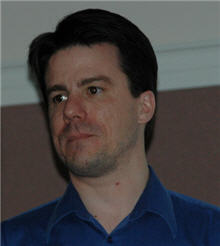Ian Murdock: Making Solaris more like Linux


Murdock’s job involves increasing developer adoption of Sun technology, especially Solaris and related technologies, such as DTrace, at a time when Linux has dramatically better mindshare. Sun needs to get the early adopters back in its camp and "synchronize" its platform strategy, Murdock said.
Murdock certainly understands the appeal of Linux, especially for the student crowd, open source fans and startups on a budget that are already familiar with Linux and the open source model.
He noted that the Web as a platform pushes the importance of an operating system down the stack--most cool, new applications are not written today for a specific operating system. However, Linux community can provide valuable lessons as the evolution of software under shifts in architecture, monetization and technologies.
Over the years, the Linux community has been adept at building a developer ecosystem, and articulating, packaging and integrating the technology, Murdock said. “The Web as a platform has to do a lot of same things the OS had to do--build ecosystem, beyond people willing to role up their sleeves and backing their way into how the system works. It’s how to make it more of coherent platform,” Murdock said. "Guess what--the OS guys know how to do that, and open source OS guys have an advantage."
As a newborn Sun employee, Murdock is thinking about making Solaris more Linux-like. “When people say Linux what do they mean? Linux is a kernel. Cool apps are not written to the kernel. The OS powers higher levels of the stack. What we want is an open OS platform and to make sure that the existing skill sets and knowledge and training investments are leveraged. We don’t want to make them learn a new product or rip and replace,” Murdock said. “You can make a real argument that Solaris innovated more than Linux in the last few years—such as DTrace and ZFS—but usability stands in the way of appreciating that,” Murdock said. “Part of what we are working on is closing the usability gap so that it doesn’t stand in the way.”
“There is no reason we can’t make Solaris look and feel more like Linux,” he continued. “There are a couple of ways we could do it. We could stick a penguin on it or take a Linux distribution and put a Solaris kernel in it. There are a few Solaris-based distros that have done that. Personally, as the person charting the course and looking at the strategy question, it becomes how to keep the competitive differentiation of Solaris while closing the usability gap.”
“As someone on the other side of the table not long ago, you can’t just rip the guts out of Linux and put in Solaris. If you do that, you are leaving out many of the compelling differentiations [of Solaris]. It will take some time to figure out precisely what the answer is.”
“Part of the problem is that Solaris is the OS of choice at Sun, but a certain group of people want Linux anyway. Why argue with them. We have to articulate the two strategies and synchronize them,” he said.
As a recent Sun convert, Murdock is echoing the Sun mantra, a solution for companies that need to scale up and potentially tap into infrastructure as a service. “I’ve been at Sun for eight days, I’m not exactly dictating strategy at this point, but there are some interesting things with network services and grids. We take a platform approach at Sun all the way down to notion of the Web as a platform, down to the hardware and we have openness at every part of the stack.” Indeed, in just a week, he is already beginning to sound like Jonathan Schwartz.